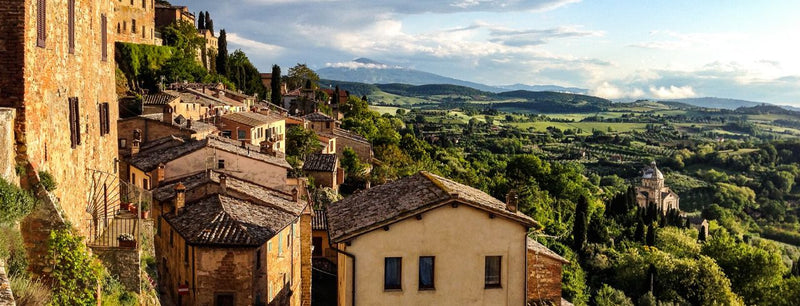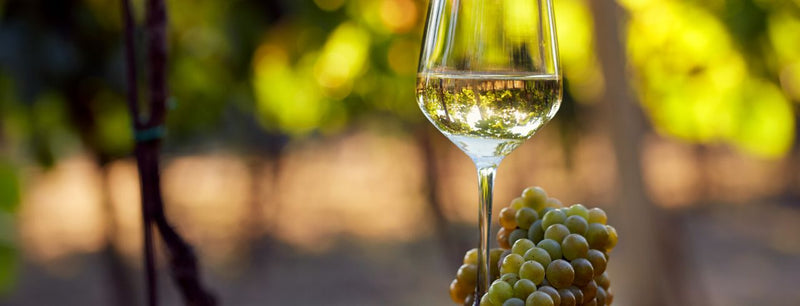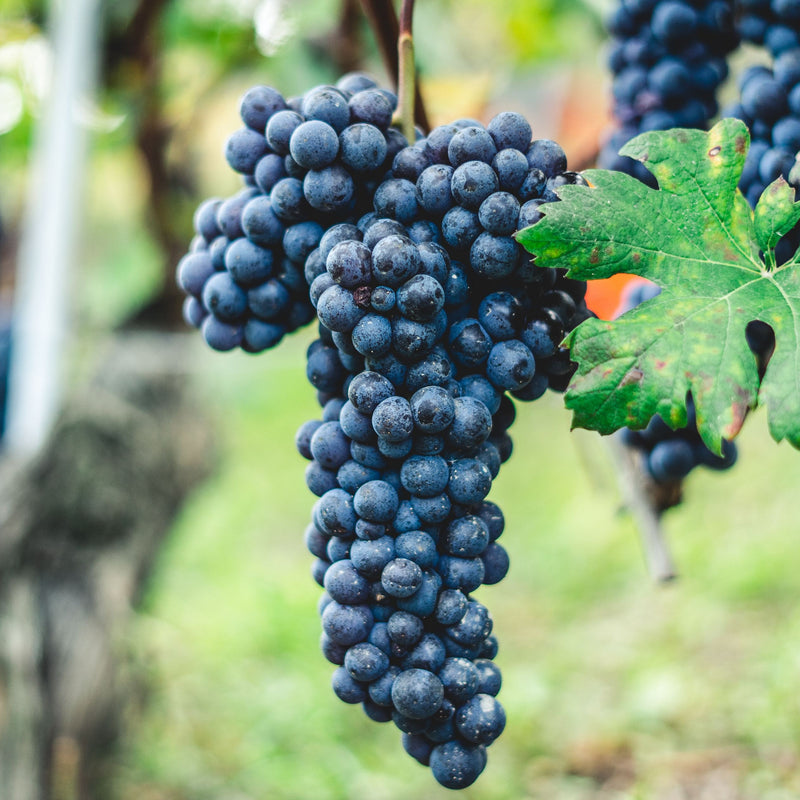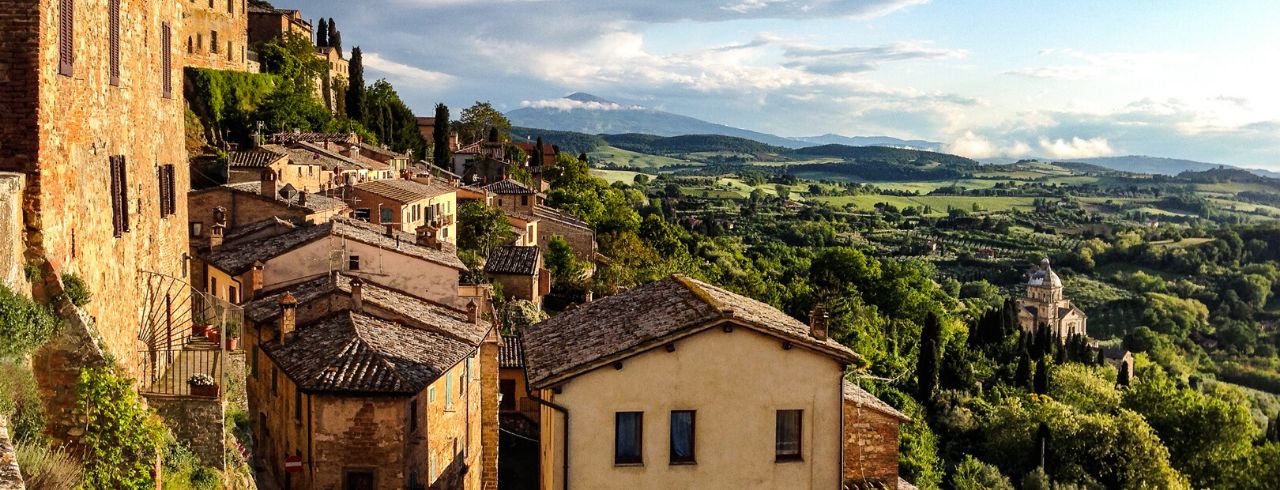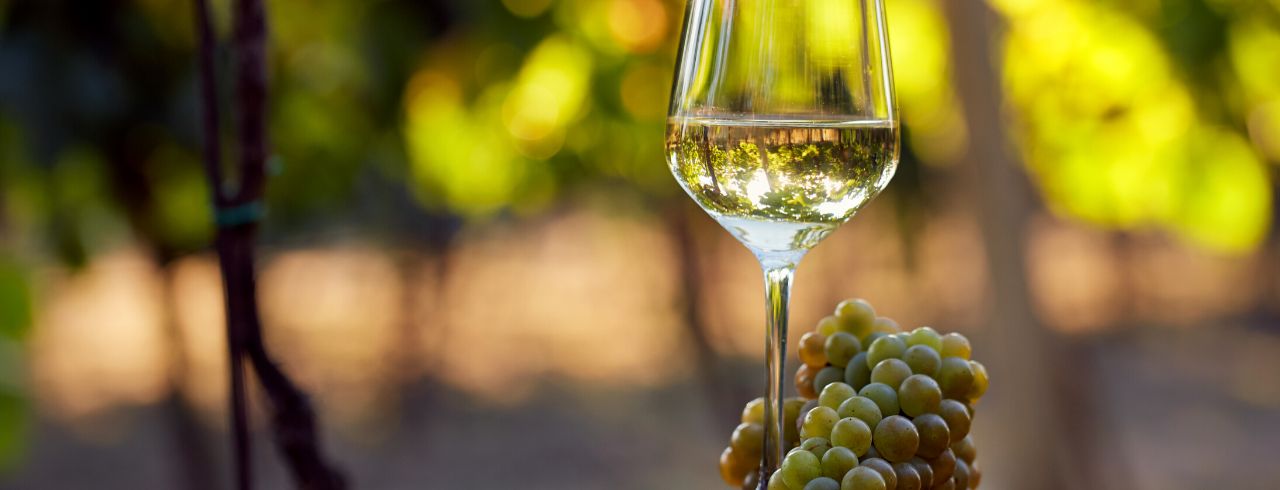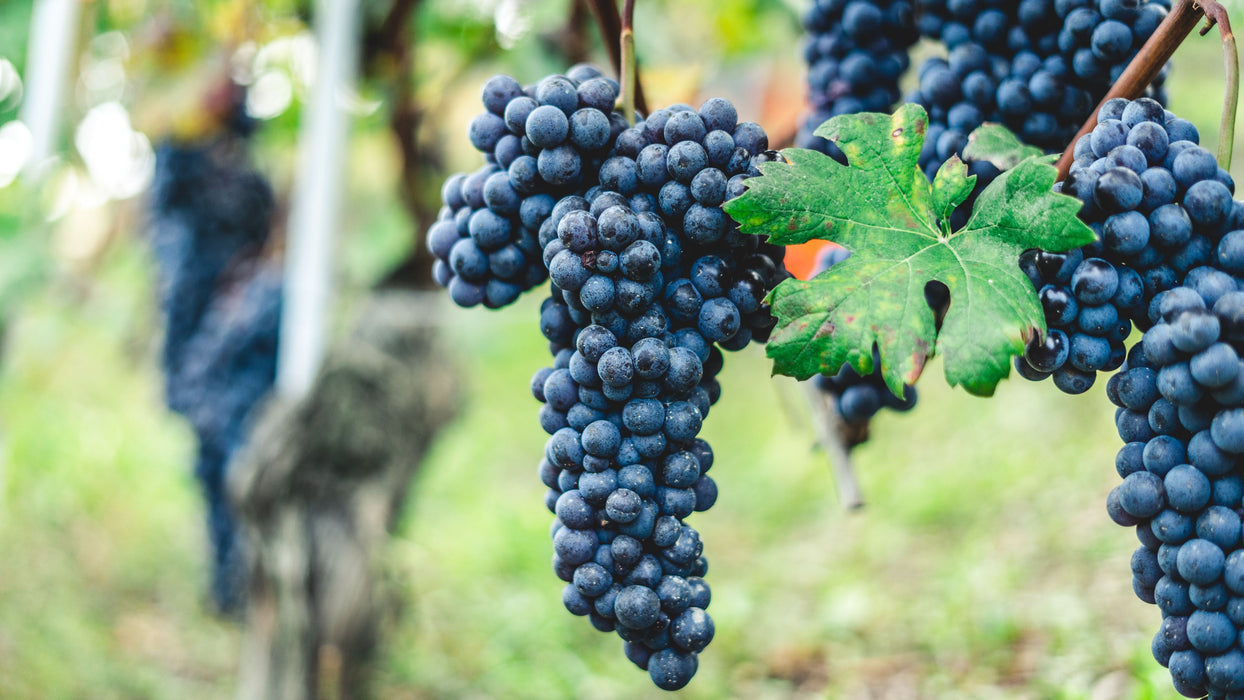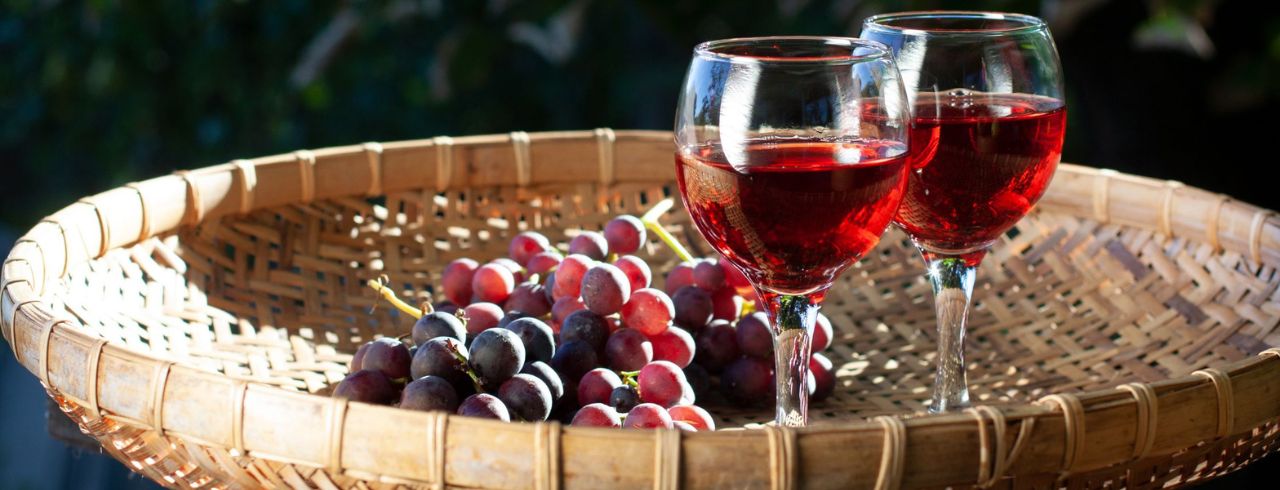
A Comprehensive Guide to Aglianico Wine
Imagine a wine so superior it’s declared the king of its region.
Considered the “King of Southern Italy,” Aglianico wine is famous for its highly refined and complex properties.
With cracked black pepper flavors complimented by lush dark berries and red fruit notes like dried strawberries, black cherry, and plum, Aglianico is a full-bodied, high-tannin, high-acid, savory wine.
So “here ye, here ye!” Let’s gather ‘round and learn more about their royal highness, the adored Aglianico.

Aglianico Pronunciation
Aglianico is a sneaky word with a “g” that’s silent. The correct pronunciation is “alli-yawn-nico.”
It might be a little difficult to remember as it doesn’t sound like it reads, so a fun way to recall is to think about Aglianico as a sleepy grape since it is harvested so late in the year (more on this later).
Now that we’re familiar with the correct pronunciation let’s look at the history of this ancient grape.
Aglianico’s Ancient Origins
Aglianico is as much a treasure as it is a mystery, as no one truly knows where the vine originated. It was first thought to have come from Greece, but modern oenologists have found nothing Greek about the grape’s DNA. While the Greeks did, in fact, spread Aglianico to Cumae in the 8th century, no records indicate its exact origin.
But while we don’t know for sure, one thing is certain; Aglianico has the most ancient origins of any other grape varietal.
Aglianico Viticulture and Classifications
A thick-skinned, black grape that loves the heat, Aglianico is a late-ripening grape that flourishes in volcanic soils. These soils lend to the smooth mineral taste of the wine and complement its leathery, dried red fruit and berry notes. Aglianico grapes are primarily grown in the regions of Campania and Basilicata.
The wine from this grape is most commonly a single varietal with firm tannins and bold acidity. With magnificent long-term aging potential, Aglianico is a full-bodied red wine in the truest sense.
Key Fact: Aglianico wines taste best when they are 10+ years of age.
Aglianico del Vulture and Aglianico del Vulture Superiore
Nestled near the extinct Mount Vulture, the Basilicata region produces the finest red wines in the country. This area is home to the region’s only Aglianico DOCG wines under the Aglianico del Vulture Superiore classification.
Several other highly esteemed Aglianico wines in this region have earned the Aglianico del Vulture DOC classification, which is just a step below but still highly regarded.
DOC, or Denominazione di origine controllata is the classification system for Italian wine and was first introduced in 1963. These esteemed Aglianico wine classifications inspired the grape’s nickname, “Barolo of the South.”
Aglianico del Vulture and Aglianico del Vulture Superiore may not be the most famous Italian wines, but they are considered the best red wines in the country.
Aglianico wines that meet the DOC and DOCG classifications must be made exclusively from the grape varietal and meet a number of specific criteria.
Key Fact: Next to Sangiovese and Nebbiolo, Aglianico is one of Italy’s three best wines.
Aglianico del Taburno
In the Campania near Mount Taburno, a different type of DOCG wine is produced. Aglianico del Taburno is the highest designation for full-bodied reds and rosés made from Aglianico in this region. DOC classifications in this region require Aglianico grapes to make up at least 85% of the blend.
Other Countries That Grow Aglianico
Because the Aglianico grape thrives in hotter climates, it has been trialed in Australia and the United States. Recently, oenologists have been experimenting with Aglianico vineyards in California, Texas, Arizona, and Ontario, Canada.
Despite production becoming more globalized, Basilicata and Campania are still the most well-known for producing traditional Aglianico wines.
Aglianico Food Pairings
If you love good barbecue, you’re in luck. Due to their high tannins and bold acidity, Aglianico wines are ideal for hearty meats and earthy dishes. The savory, red fruit taste and smokey flavors are lovely with fatty barbecue and game meats like rabbit and venison. This wine also tastes decadent with buttery dishes like sauteed mushrooms.
A good rule of thumb is if there are fats and savory flavors, Aglianico is perfect, as the acid content will cut through the fat. Its tannins will balance out the smokey flavors of barbecue and other rich meats and vegetables.
Aglianico Aging Potential
If you caught our key fact earlier, you know Aglianico has excellent aging potential. Because of the wine’s higher acid and tannin content, its taste will become smoother over time, taking on a more chocolatey flavor and medium alcohol content.
Younger Aglianicos are wild and gamey, with a sharp, acidic taste and robust plum and cherry flavors. They start with a garnet hue, but as they age, they take on more clay-like colors.
This is why if you’re looking for a calmer, silkier texture and flavor in your Aglianico wine, try those aged for ten or more years. Ideally, Aglianico tastes best between ten and twenty years.
Give Aglianico A Try
France is not the only country with esteemed wine regions, as the Aglianico grape varieties that are grown in Southern Italy reign supreme. Aglianico remains one of the most sought-after Italian wines due to its volcanically grown grapes, full-bodied structure, and rich, savory flavors that allow it to be paired with rich meat dishes like barbecue.
Its DOCG statuses and mysterious ancient origins make Aglianico the brooding royal pick of Italy. It’s one of the three best wines in the country, and it doesn’t care who does or doesn’t know about it.
See our full collection if you’d like to try delectable Italian wines for excellent, affordable prices.
Visit the Wine Insiders blog for more insights on famous wines and the wine industry.
